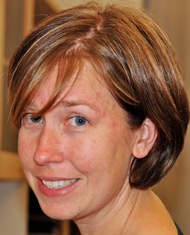 |
||||||
| School of Medicine • University of Washington • Box 357735 • 1705 NE Pacific St • Seattle WA 98195 | ||||||
About Amy Schaefer Dr. Schaefer holds a BS and PhD in Microbiology from the University of Iowa (go Hawks!). She performed post-doctoral research at Kewalo Marine Laboratory, University of Hawai’i and the University of Wisconsin, Madison where she studied beneficial microbe-animal interactions in the Vibrio-Squid symbiosis. In 2005 she moved to the University of Washington as a Research Scientist where she helps manage the Greenberg and Harwood labs. Dr. Schaefer’s future plans include winning the Powerball lottery, which would enable her to fund The Institute for Non-essential Knowledge, Education and Research (TINKER).
|
|
Research Dr. Schaefer has a long-standing interest in understanding how bacteria sense and respond to their environment. Working with Drs. Harwood and Greenberg, she has discovered a new chemical ‘dialect’ of the homoserine lactone (HSL) quorum sensing ‘language’ used by many Proteobacteria. Quorum sensing is a term used to describe cell-to-cell communication that allows cell density-dependent gene expression. Prior to our discovery, all known HSL quorum-sensing signals consisted of a fatty acid acyl group (derived from bacterial fatty acid biosynthetic pathways) linked to a homoserine lactone group (derived from S-adenosylmethionine). The fatty acid tail provides signal specificity, but the variety of possible signals that can be generated is limited. Recently, we identified a novel HSL quorum sensing system in Rhodopseudomonas palustris (Nature 2008 454:595). This phototrophic bacterium uses a LuxI-type HSL synthase to produce p-coumaroyl-HSL. Unlike previously described fatty acyl-HSLs, the p-coumaroyl side chain is derived from an exogenously provided plant metabolite, p-coumarate, rather than from endogenous bacterial fatty acid synthesis intermediates. The use of p-coumarate for quorum sensing signal production results in a single signal that integrates two distinct cues: sufficiently high bacterial population densities and the availability of a particular exogenous substrate.
|
||||
Amy Schaefer, Ph.D.
|
||||||
